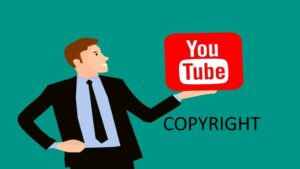Table of Contents
INTRODUCTION
Youtube is a website that was created in 2005, where people from all over the world can upload and share videos. It is a video-sharing service where users can watch, like, share, comment, and upload their own videos. The video service can be accessed on PCs, laptops, tablets and via mobile phones.
It is a free-to-use service and a can be a great space for teens to discover things they like. For many young people, YouTube is used to watch music videos, comedy shows, how to guides, recipes, hacks and more. Teens also use the video-sharing service to follow their favourite vloggers (video blogger), subscribe to other YouTubers and celebrities they are interested in.
Due to a large number of businesses, institutions, and independent artists using the platform, as well as the possibility to monetize, issues with fair use and copyright have also started to appear. Since the video-sharing service is free, some users try to make money off of the work of others by stealing, reposting, or passing off existing footage as their own in order to acquire popularity.
Another serious issue is the way that malicious entities have unfairly removed films they do not like using YouTube’s Copyright system in various instances. Both of these problems are the result of intentional misuse or misinterpretation of the ideas of fair use and copyright.
Copyright and youtube
Copyright is a law and a type of intellectual property that is used to give credit to the authors of non-physical works. The original expression of an idea can be safeguarded via copyright against theft, modification, and other types of infringement that could be detrimental to the author. In the digital age, when there is a greater prevalence of online work sharing and a greater need to properly acknowledge authors and protect their rights, copyright has gained ground.
On youtube, creators can share work while still maintaining their ownership of the original content. Without permission, content is frequently stolen, reposted, and repurposed. This is especially more obvious when it comes to the intellectual property of large enterprises, businesses, or authors who are not part of the platform. It is a platform where content may be freely shared with the public, YouTube is closely related to online piracy

Fair use on YouTube
Fair use is a legal doctrine that says use of copyright-protected material under certain circumstances is allowed without permission from the copyright holder.
YouTube gets many requests to remove videos that copyright holders claim are infringing under copyright law. Sometimes these requests apply to videos that qualify for copyright exceptions or seem like clear examples of fair use.
Different countries and regions may have different rules about when it’s OK to use copyright-protected material without the copyright holder’s permission.
In the United States, works of commentary, criticism, research, teaching, or news reporting may be considered fair use. In the EU, more limited exceptions are recognized and the use must fit into specific categories, such as quotation, criticism, review, caricature, parody, and pastiche. Other countries/regions have a concept called fair dealing that may work differently.
Ultimately, courts decide fair use cases according to the facts of each unique case. You’ll probably want to get legal advice from an expert before uploading videos that use copyright-protected material.
CASE LAWS
Patanjali Ayurveda Limited & another v Google LLC & others
2019 CS (OS) 104/2019 & I.A. 2577/2019 In response to a lawsuit brought by Patanjali Ayurveda Limited and Baba Ramdev, the Delhi High Court ordered YouTube to remove a video that purportedly disparaged Patanjali products.
Since the video allegedly made various threats, insulting, and defamatory claims about Patanjali Products, Patanjali and Baba Ramdev requested a permanent injunction against it. Additionally, they requested a court order to force Google, YouTube, and Facebook to remove the video and all links to it from both Indian and foreign domains. The court ordered Facebook to make sure that connections to the video are removed from its platform in addition to ordering YouTube to remove the video.
The court further noted that the video had broken both the self-imposed rules of these platforms as well as the law because of its explicit and disparaging language. This is in response to a previous court ruling mandating the removal of the video from these platforms’ Indian domains. To help Patanjali take further action, the court also ordered YouTube to give any information it has about the person who uploaded the video.
Shree Krishna International Film Productions v Google India and YouTube LLC,
2019 Suneel Darshan, a well-known film producer and owner of Shree Krishna International (the Plaintiff), filed a lawsuit against Google Inc., Google India Pvt. Ltd., and YouTube LLC (the Defendants) in the District Court of Gurgaon, Delhi NCR, alleging copyright violations of his sound recordings, cinematograph films, and audio-visual works. The plaintiff claimed that YouTube’s popular “YouTube Downloader” feature was unauthorized to upload the content.
The plaintiff denied granting the defendants authorization to keep, broadcast, or otherwise publish the works. The unlicensed downloader and the defendants shared the advertising money or other gains from the illicit exploitation of the plaintiff’s copyrighted works, causing the plaintiff considerable financial losses. The court held that the defendants breached the plaintiff’s copyright for the songs and substance of her Hindi movies and caused her financial loss. The court granted the plaintiff INR 50,000 and restrained the defendants and others from repeating the violation.
MUST READ
PUBLIC HEALTHCARE LAWS IN INDIA-2023
